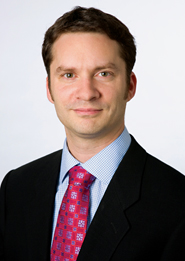(Bloomberg) — The effort to stamp out manipulation in one of the currency markets most important benchmarks may have inadvertently created a profitable strategy for proprietary traders, according to a company with expertise in electronic trading.
After getting hit with nearly $10 billion in fines for taking advantage of clients, major banks — following feedback from regulators — appear to have changed how they contribute to the WM/Reuters currency benchmark to avoid even the appearance of conflicts of interest, according to Pragma Securities LLC.
Because trades are sliced up into smaller bites that are executed evenly during a five-minute window, its now easier for hedge funds and high-frequency trading firms to predict how the WM/Reuters benchmark will move, according to a report Tuesday from Pragma, which develops trading software.
Detecting and making money from market patterns is what proprietary traders are supposed to do, but in this case it means customers relying on the benchmark may again be getting a bad deal.

Once you observe the rate changes in the first seconds or minutes of the fix window, you have information about whats likely to happen next, said David Mechner, Pragmas chief executive officer. If youre a proprietary trader, you can use that information to put on a position in anticipation of that likely price move.
Pragma said dealers behavioral shift along with revisions to the length of time it takes to calculate WM/Reuters have resulted in unusually predictable patterns in the currency rates.
Joint Venture
The WM/Reuters service is a venture between World Markets Co., which is a subsidiary of State Street Corp., and Thomson Reuters Corp. Bloomberg LP competes with Thomson Reuters in providing news, currency-trading systems and pricing data.
A Reuters spokesman, Brian Mairs, said that while the firm contributes data to the calculation, World Markets is responsible for operating the benchmark. Lucy Davidson, a spokeswoman for State Street, didnt respond to calls or an e- mail for comment.
Part of the problem is the sheer demand for trading during the window by investors and companies. Such firms tend to use benchmarks because the measures match how indexes are calculated and often how they are evaluated. The downside is that the trades are often in the same direction, creating an imbalance between supply and demand.
The process has been made more transparent, but it creates an opportunity for hedge funds, market makers and other trading firms to exploit the benchmarks users.
More Obvious
Because the industry is moving toward a more transparent way of trading, its more obvious, Mechner said. Firms can try to use that predictability to either trade proprietarily or to try and improve their trading results if theyre a directional trader.
The joint venture known as WM/Reuters expanded the window from one to five minutes in February as part of an attempt to make the process harder to rig. Lengthening the window to 30 minutes could help protect benchmark users, Mechner said.
Pragma compared trading in five of the most popular currency pairs before and after the window was widened. Volume at the start of the fix — as the benchmark-setting procedure is known — rose more sharply after February, but it was flatter during the window than it had been under the old system. Pragma said that pattern was consistent with the banks using simple algorithms to space their trading evenly throughout the window.
Textbook Illustration
This pattern looks like a textbook illustration of market impact, and will allow firms with the capability to track and exploit such patterns to improve performance of orders benchmarked to the fix, Pragma said in the report.
The WM/Reuters rates were previously calculated from the median of all trades in a 60-second period. That window was widened earlier this year, following a recommendation from the Financial Stability Board.
Pragma said its algos and order-routing software handled 7.2 percent of the U.S. equity market in June. Mechner, who co- founded the trading technology and quantitative research firm, previously worked as research director at Pragma Hedge Fund and was a doctoral fellow at New York Universitys Center for Neural Science.
Foreign-exchange rate changes later in the five-minute window usually maintain the same direction as they did earlier in the window, according to the Pragma report. So, by watching the first few minutes, traders can try to predict what will happen in the last few minutes. The size of price change is material — it averages about 2 basis points.
The basic liquidity demands that the buyside are placing on the fix window, combined with the new size of it, and the shift in how banks are servicing those client orders, have created this predictability, Mechner said.



